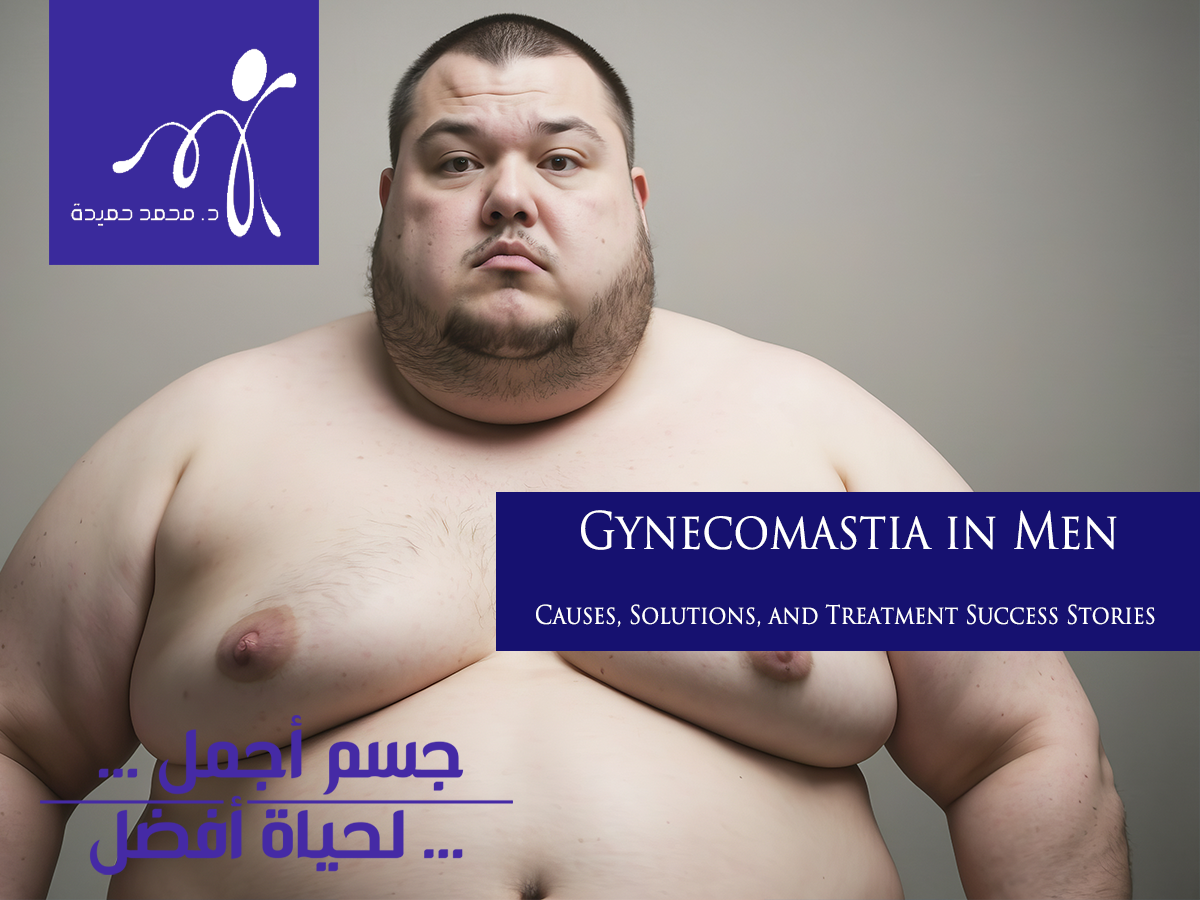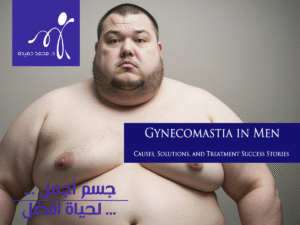Introduction
Gynecomastia—a condition many men hesitate to talk about—refers to the enlargement of male breast tissue, often causing emotional distress and self-image issues. While it’s medically harmless in most cases, the impact on confidence, social comfort, and mental health can be significant.
In Egypt and across the Middle East, more men are now stepping forward to address gynecomastia through advanced medical and surgical solutions. Whether you’re dealing with mild puffiness or more severe breast development, you’re not alone—and you’re not without options.
This guide provides a detailed, professional overview of what gynecomastia is, why it happens, how it’s treated, and what to expect before and after surgery. With expert care from professionals like Dr. Mohamed Hemida, recognized as one of the best cosmetic surgeons in Egypt, thousands of men have reclaimed their bodies and their confidence.
What Is Gynecomastia?
Gynecomastia is a benign condition involving the growth of glandular breast tissue in males, often caused by a hormonal imbalance—particularly an increase in estrogen or a drop in testosterone. It can affect one or both breasts, and may occur during:
- Puberty
- Adulthood (age 30+)
- As a side effect of medications or health conditions
It’s not simply chest fat (that’s called pseudogynecomastia), but rather real glandular tissue, often firm and tender, which doesn’t go away with exercise or weight loss.
Gynecomastia in Numbers
- Gynecomastia affects up to 65% of adolescent boys, but often resolves on its own.
- Among adult men, it impacts 1 in 3, especially ages 25–50.
- In Egypt, the number of male chest correction surgeries has risen by over 80% in the last decade.
- More than 90% of patients who undergo gynecomastia surgery report higher self-confidence and improved quality of life.
Common Causes of Gynecomastia
- Hormonal Imbalance
Elevated estrogen or reduced testosterone during puberty, aging, or due to endocrine disorders. - Medications
Certain drugs for depression, ulcers, prostate, or steroids can trigger breast tissue growth. - Liver or Kidney Disease
These can disrupt hormone metabolism. - Substance Use
Alcohol, marijuana, anabolic steroids, and certain drugs (e.g., heroin) are linked to gynecomastia. - Obesity
Converts testosterone into estrogen through fat tissue. - Genetic Disorders or Tumors
In rare cases, testicular or adrenal tumors may affect hormone production.
How Do You Know It’s Gynecomastia?
- Firm or rubbery tissue under the nipple
- Breast asymmetry or puffiness
- Tenderness or sensitivity
- Emotional discomfort or body image issues
A professional evaluation—sometimes including ultrasound or hormone tests—is essential to confirm diagnosis and rule out other conditions.
Treatment Options
1. Lifestyle Changes (for mild cases)
- Weight loss
- Hormone balancing
- Stopping causative medications
However, this rarely resolves the problem entirely once glandular tissue is established.
2. Medication (limited use)
Some hormonal treatments may help during early onset stages, but are rarely used long-term.
3. Surgery: The Gold Standard
Surgical male breast reduction is the most effective and permanent treatment for gynecomastia.
🔹 Surgical Techniques:
- Liposuction: Removes excess fat in pseudogynecomastia.
- Gland excision: Removes hard glandular tissue.
- Combined approach: Used in most true gynecomastia cases.
- Skin tightening: Required in severe or Grade 3 gynecomastia with sagging.
Duration: 1–2 hours
Anesthesia: General or local with sedation
Hospital Stay: Outpatient or 1-night stay
Recovery: 1–2 weeks for light activity, 4–6 weeks full recovery
The Psychological Impact
Men with gynecomastia often suffer in silence:
- Avoid swimming or taking off their shirts
- Slouch to hide chest shape
- Experience anxiety in relationships
- Feel “less masculine” or ashamed
Surgical correction is not vanity—it’s a step toward mental freedom, social comfort, and body confidence.
Patient Quote:
“I spent years hiding under baggy clothes. After surgery with Dr. Hemida, I wore a fitted T-shirt for the first time in a decade. It changed how I see myself.”
Surgery Step-by-Step
- Consultation
- Full physical exam, hormone tests if needed
- Photography and chest measurement
- Surgery plan based on grade/type
- Surgery Day
- Administer anesthesia
- Make discreet incisions (usually under nipple)
- Remove gland + fat
- Place compression band
- Patient discharged same day or next morning
- Post-Surgery Care
- Rest, compression vest, follow-up appointments
- Pain is mild, managed with medication
- Return to work in 5–7 days
Benefits of Gynecomastia Surgery
- Flat, masculine chest contour
- Permanent removal of gland tissue
- Better fitting clothes
- Boosted confidence and social life
- Minimal scarring with modern techniques
❓ 15 Frequently Asked Questions (FAQs)
1. Can gynecomastia go away on its own?
Sometimes in teenagers, but adult gynecomastia often requires surgery.
2. Is it fat or real breast tissue?
Gynecomastia is glandular, not just fat. That’s why exercise alone won’t fix it.
3. Does insurance cover the procedure?
Rarely. In Egypt, it’s considered cosmetic unless proven medically necessary.
4. What’s the cost in Egypt?
On average: 35,000–60,000 EGP, depending on severity and facility.
5. Is the surgery painful?
Mild soreness is expected. Most patients rate it 3–4 out of 10 on the pain scale.
6. Will there be scars?
Yes, but they are small, well-hidden, and fade over time.
7. When can I go back to the gym?
Light cardio in 2 weeks. Upper body weights after 4–6 weeks.
8. Can I combine it with other procedures?
Yes—many patients combine it with abdominal etching or VASER lipo.
9. How long do results last?
Permanent, as long as you maintain a stable weight and hormone balance.
10. Will my chest look natural?
Yes. A skilled surgeon like Dr. Hemida ensures a masculine, natural contour.
11. Can I stop wearing the compression vest early?
Not recommended. It’s crucial for reducing swelling and tightening skin.
12. Is gland removal always necessary?
Yes, for true gynecomastia. Liposuction alone isn’t enough in most cases.
13. Is the procedure risky?
Risks are minimal with an experienced surgeon. Complications are rare.
14. What if the gynecomastia returns?
This is very rare. If it does, it’s usually due to new hormonal changes or steroid use.
15. Why choose Dr. Mohamed Hemida?
Because he combines:
- 12+ years experience
- Aesthetic precision
- Patient-centered care
- Hundreds of successful male chest transformations
❗ Myths vs. Facts
Myth 1: Only overweight men get gynecomastia
Fact: Even slim men with hormonal imbalances can develop glandular breast tissue.
Myth 2: Chest exercises will fix it
Fact: Muscles grow—but the gland stays unless surgically removed.
Myth 3: It’s embarrassing to get help
Fact: Seeking help is strength. Gynecomastia is common and treatable.
Myth 4: All cosmetic surgeons can perform this surgery
Fact: It requires special expertise in male chest anatomy and aesthetics.
Myth 5: Recovery is long and difficult
Fact: Most men return to normal life in 1 week, gym in a month.
✅ Conclusion
Gynecomastia can be more than a physical issue—it can shape how you live, dress, and relate to the world. The good news? It’s treatable, safe, and highly effective.
If you’re ready to take control of your body and regain your confidence, gynecomastia surgery may be the answer. And with Dr. Mohamed Hemida, you’re in expert hands.
📞 Book your consultation today with Dr. Mohamed Hemida
🌐 www.drmohamedhemida.com
📍 Cairo – Alexandria
📱 +20 1009304755




